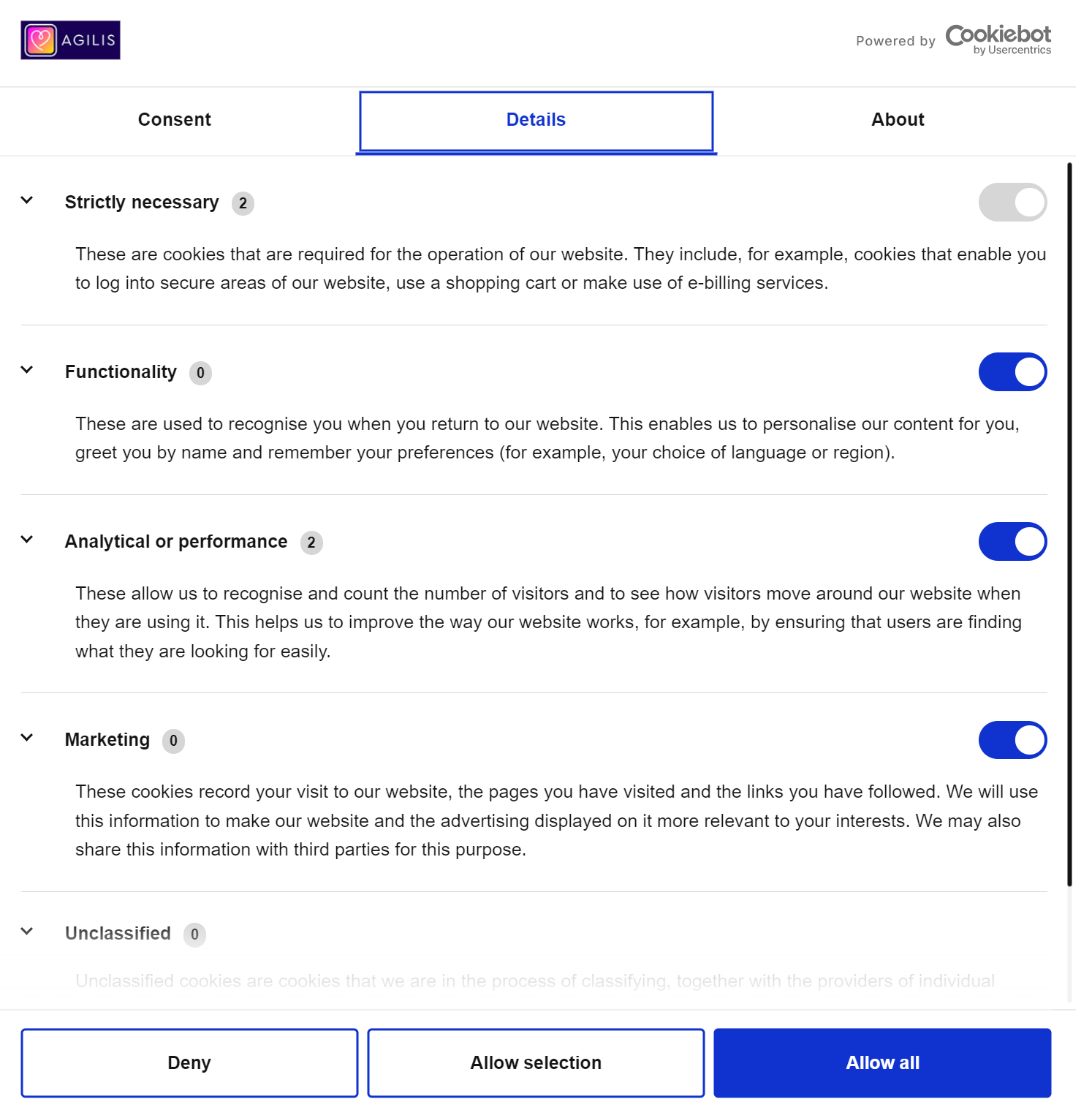Cookie policy
Our website and mobile apps uses cookies to distinguish you from other users of our website. This helps us to provide you with a good experience when you browse our website and also allows us to improve our site.
A cookie is a small file of letters and numbers that we store on your browser or the hard drive of your computer if you agree. Cookies contain information that is transferred to your computer's hard drive.
We use the following cookies:
-
Strictly necessary cookies. These are cookies that are required for the operation of our services.
-
Analytical or performance cookies. These allow us to recognise and count the number of visitors and to see how visitors use our services. We use this information to improve the way our services works, for example, by ensuring that users are finding what they are looking for easily.
-
Marketing cookies. These cookies record your visits, the pages or screens you have visited and the links you have followed. We will use this information to make our platforms and the advertising displayed on them more relevant to your interests. We may also share this information with third parties for this purpose.
You can find more information about the individual cookies we use and the purposes for which we use them in the table below:
|
Cookie title |
Context |
Category |
Purpose |
Third-party link |
|
Cookiebot |
Website |
Strictly necessary cookies |
Cookiebot stores your consent in the form of a cookie. |
|
|
Mobile Login |
Mobile apps |
Strictly necessary cookies |
These are cookies that are required for the operation of our mobile apps. They include, for example, cookies that enable you to log into secure areas of our mobile apps or make payments. |
N/A |
|
Matomo |
Website and Mobile apps |
Analytical or performance cookies |
We use Matomo to see how our mobile apps are being used and improve your user experience. |
You can choose which cookies our website can set by clicking on the switches below upon your visit:

If you wish to change your consent, you can click on the icon having the image below that’s displayed in the bottom left corner of each website page.
![]()
Do Not Track (DNT)
Do Not Track is a web browser setting that adds a signal to your browser’s header, telling other websites that you do not want their tracking cookies. We honour and enforce Do Not Track preferences and describe below how this can be enabled on some commonly used browsers.
Please note that these instructions may not apply to your version of browser, and so we advise referring to your browser documentation if these are inaccurate.
Google Chrome
Open the main menu (three dots) and select Settings
Find the “Privacy and security” section
Enable the Send a "Do Not Track" request with your browsing traffic option
Apple Safari
Apple removed the “Do Not Track” feature from their Safari browsers and instead implemented their own version of tracking prevention.
On MacOS devices:
Open the main menu and select “Preferences”
Find the “Privacy” tab and look for “Website tracking”
Check the box next to “Ask websites not to track me”
On iOS devices:
Open the “Settings” app
Select Safari
Enable the option: “Prevent Cross-Site Tracking”
Microsoft Edge (Windows)
Open the main menu (three dots) and select Settings
Select View advanced settings, or look in the section on the left hand menu
Locate the “Privacy, search and services” section
Enable the option: “Send Do Not Track requests”
Mozilla Firefox
On Android devices:
Open the main menu (three dots) and select “Settings”
Select “Privacy”
Enable the option: “Do not track”
On other devices:
Open the main menu (three lines) and select “Settings” or “Options”
Select “Privacy & Security”
Enable the option called: Send websites a "Do Not Track" signal that you don't want to be tracked
Microsoft Internet Explorer (Windows)
Open the “Tools” menu (which may appear like a cog)
Select “Internet Options”
Select the “Advanced” tab
Find the “Security” section
Enable the option called “Always send Do Not Track header”
Press the “Apply” and “OK” buttons
Opera
Open Opera’s menu (which may appear like a letter O next to the word “Menu”) and select Settings
Select “Privacy & security” in the left-side menu
Click on “Cookies and other site data”
Enable the option called: Send a "Do Not Track" request with your browsing traffic